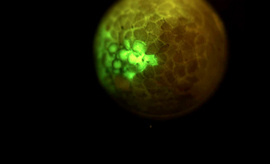Dissecting Highly Mutagenic Processing of Complex Clustered DNA Damage in Yeast Saccharomyces cerevisiae
Clusters of DNA damage, also called multiply damaged sites (MDS), are a signature of ionizing radiation exposure. They are defined as two or more lesions within one or two helix turns, which are created by the passage of a single radiation track. It has been shown that the clustering of DNA damage compromises their repair. Unresolved repair may lead to the formation of double-strand breaks (DSB) or the induction of mutation. We engineered three complex MDS, comprised of oxidatively damaged bases and a one-nucleotide (1 nt) gap (or not), in order to investigate the processing and the outcome of these MDS in yeast Saccharomyces cerevisiae. Such MDS could be caused by high linear energy transfer (LET) radiation. Using a whole-cell extract, deficient (or not) in base excision repair (BER), and a plasmid-based assay, we investigated in vitro excision/incision at the damaged bases and the mutations generated at MDS in wild-type, BER, and translesion synthesis-deficient cells. The processing of the studied MDS did not give rise to DSB (previously published). Our major finding is the extremely high mutation frequency that occurs at the MDS. The proposed processing of MDS is rather complex, and it largely depends on the nature and the distribution of the damaged bases relative to the 1 nt gap. Our results emphasize the deleterious consequences of MDS in eukaryotic cells.


